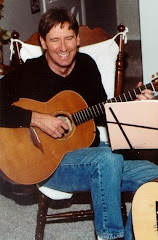Once again on our trip to Germany we returned to the Romantische Strasse. The "Romantic Road," romantic as it may be in the English sense, actually derives its name from the route the Roman Legions took when they invaded Germany, principally under Augustus Caesar. The route begins in Fussen, most notably the location of Schloss Neuschwanstein, King Ludwig II's famous castle. I've written about previous trips there.
This trip took us north from Augsburg (named for Augustus) to Germany's primary wine region along the Main river. Along the way we stopped at several historic towns that dot the Romantische Strasse. Most of the cities still have some of their medieval buildings and fortifications in place. We've visited most towns on the route, but I'll just mention a few of our favorites here.
One of my favorites is Rothenburg (Ob Der Tauber--Literally, above the Tauber river). This ancient city still has many buildings that are several centuries old, and the ancient city walls still stand. It's very touristy, but somehow that doesn't diminish it's charm. On a past trip we stayed at an inn in town that was established in the 12th century.
Another highlight is Dinkelsbuhl, which was originally the seat of a Frankish monarch, and fortified as a major trade center at the intersection of routes that ran from the Baltic to Italy, and from Worms to Prague. I really like the beautiful gabled houses in this town. The center of most towns in this area is dominated by a church, and in Dinkelsbuhl, the huge gothic St. Georges church towers over the central square. It was begun in 1488, and took many years to complete.
Harburg is a small medieval town dominated by the Harburg fortress, which sits above it on the burgberg. The river Wornitz also runs through town. Hargburg is remarkably intact and historic tours of the castle are interesting. One remarkable aspect of this castle is that it was occupied by protestants, which is quite rare in overwhelmingly Catholic Barvaria. It was originally built by the Staufer emperors to secure a trade route, but was later taken over by the Counts of Oettingen. The same family still owns it.
Next: Our stay in the Main river wine region.
Subscribe to:
Post Comments (Atom)





No comments:
Post a Comment